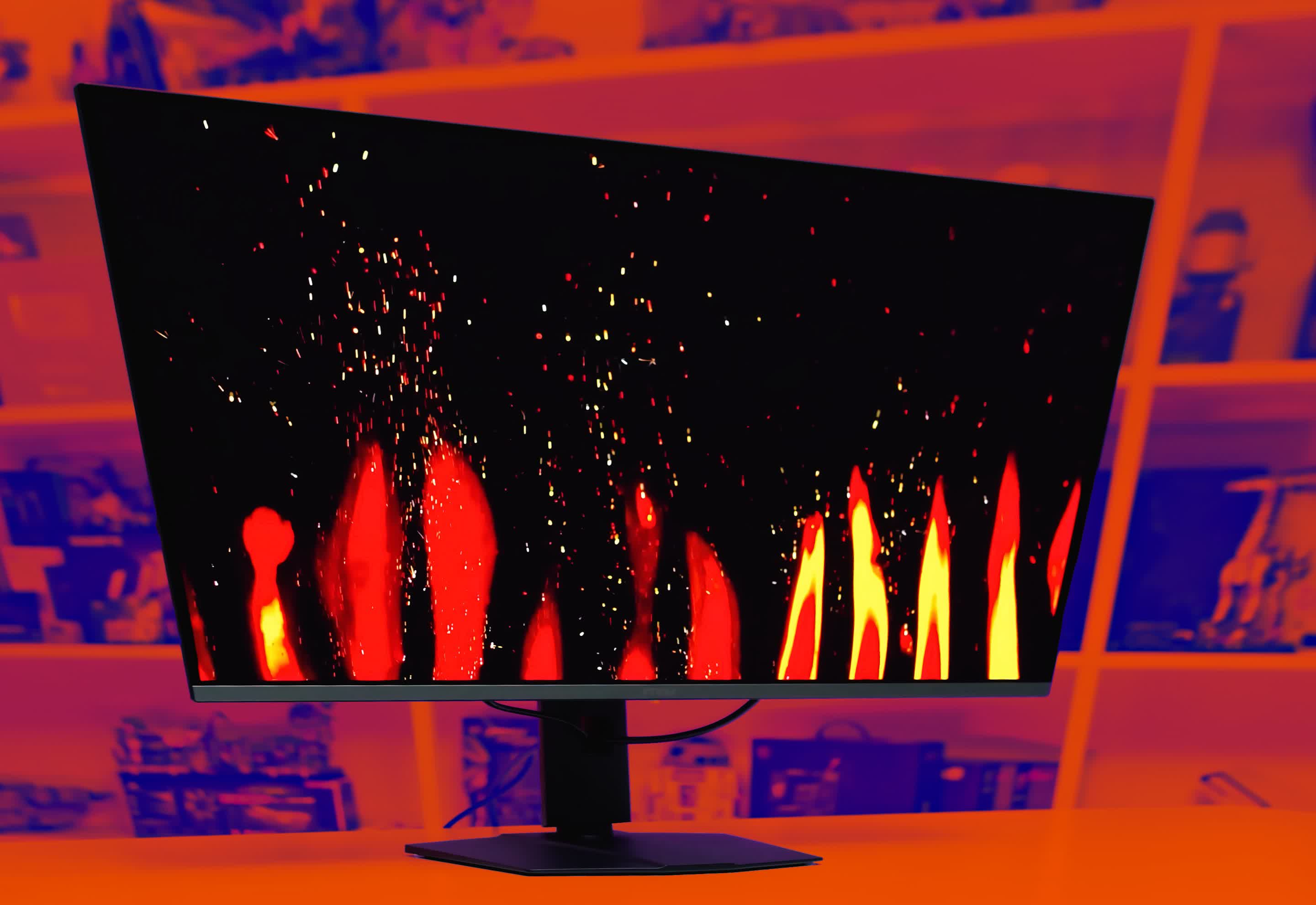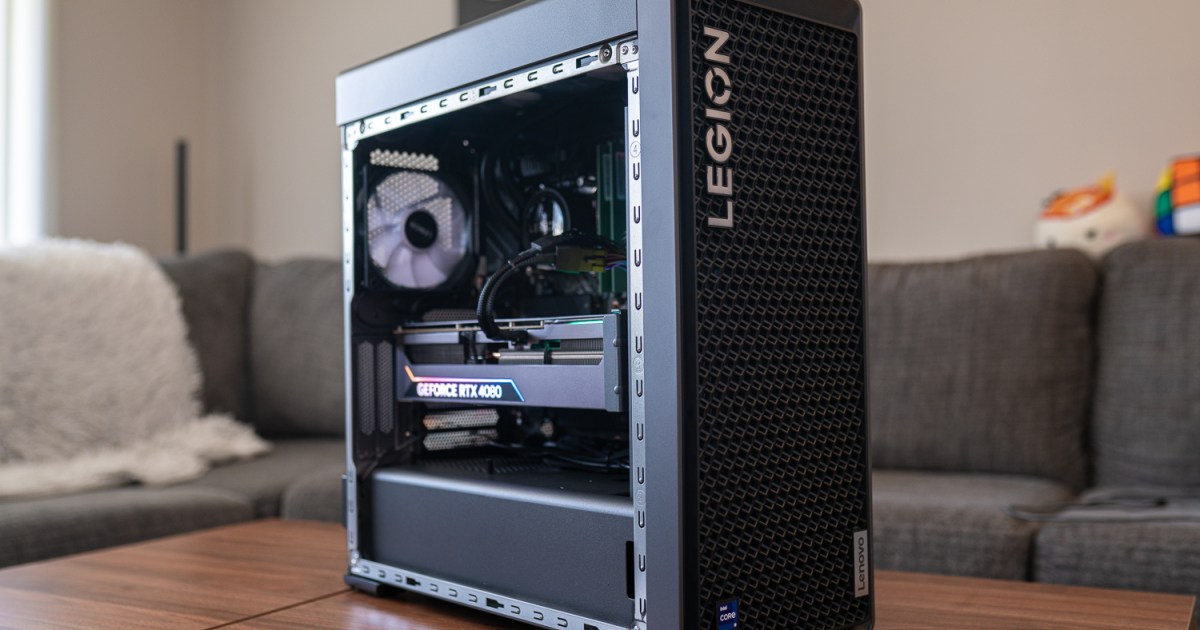[ad_1]

Aurich Lawson / Getty Images
Accessories like tempered glass screen protectors, drop-tested cases, Popsockets, wearables, and chargers and charging cables are par for the course when getting a new phone. But that’s only scratching the surface of the mobile accessories ecosystem, as there are plenty of unique, innovative, and unusual gadgets that you can pair with your phone. If you’re adventurous and need or want something a bit out of the ordinary, here are eight handy smartphone accessories. Some of them will be practical and useful, while others are more fun and whimsical. Whatever your preference, there may be something on this list that catches your eye and adds some novelty to your mobile life.
Fujifilm Instax Mini Evo instant film camera and printer
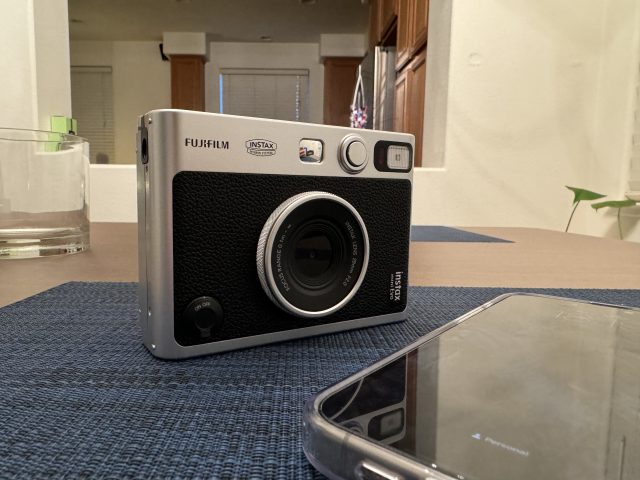
Chuong Nguyen
If you’d like to upgrade to the latest generation of smartphones—like Samsung’s Galaxy S22 Ultra, Apple’s iPhone 15 Pro Max, or Google’s Pixel 8 Pro—chances are you’re doing so to get a camera boost. So why would you get a separate digital camera to pair with your phone, especially one with a lower-resolution image sensor? Fujifilm isn’t banking on the technology prowess of its Instax line—instead, the camera-maker wants to play into your sense of nostalgia with a tool that produces Polaroid-like photos. The Instax Mini Evo tugs on your heartstrings with its film-based approach to photography, turning snaps into tangible keepsakes rather than a digital file that’s destined to be ignored in the cloud.
Unlike cheaper analog-only models in Fujifilm’s Instax lineup, the flagship Evo also captures digital photo files so you can transfer them wirelessly to your phone and share them with friends. Though not a true analog print, I appreciate the combined digital and print approach of the Instax Mini Evo, as it brings a lot more versatility.
The Instax lineup has piqued the interest of hipster millennials and teenagers alike with its charm. Not only can this retro-inspired Mini Evo camera capture digital photos and turn them into analog prints, but it can also be used as a photo printer, allowing you to turn your existing digital memories into photographs that you can hold in your hands or frame.
For a more luxurious upgrade, you can try the Leica Sofort 2, which is a re-badged Instax Mini Evo with the famed German camera maker’s branding and color tuning.
The good
- Can capture digital files and print analog photos
- 2-in-1 device can be used as both a camera and a photo printer
- Compact size, fun to use, and produces invaluable keepsakes
The bad
- Film can be expensive to purchase
- Film cartridges represent a lot of plastic waste
Ray-Ban Meta Smart Glasses

Chuong Nguyen
Ray-ban Meta smart glasses
Fashioned after Ray-Ban’s iconic Wayfarers (or a second-round Headliner style), these are the company’s second generation of smart glasses after the launch of the Ray-Ban Stories—and what a difference a few years has made. Now more refined and designed to fit a variety of different face shapes, the co-branded Ray-Ban Meta smart glasses is practical and also interesting. (It’s worth noting that this is the first time Facebook parent Meta is showcasing its name in its collaboration with Ray-Ban.) These glasses pack in a camera, a camera indicator for those privacy-conscious bystanders around you, microphones, and speakers for your favorite playlist.
While the functionality may seem familiar to Google’s defunct Glass ambition, the Meta and Ray-Ban collaboration lacks a screen to display useful information, which may help to reduce the “creep factor.” I had a lot of fun capturing picnics, days at the beach, and even a wedding with the head-worn camera, and though the camera indicator light at the front on one side of the temple did attract conversation, people were surprisingly not turned off by the idea of being recorded by my glasses. Of course, the flurry of smartphone cameras trying to capture every living second of this planet in the TikTok era has also helped to destigmatize wearable cameras. The Ray-Bans come in various lenses, ranging from UV-protected sunglass lenses to transition lenses, which helps make them more useful indoors or on gloomier days when the Sun isn’t out.
And with built-in speakers and touch controls on the arms of the glasses, I was able to listen to music on casual walks around San Francisco. There was some audio leakage, as these are open speakers, but it wasn’t really too noticeable or distracting unless I cranked the volume up to high in a quiet room with someone standing next to me. I’ve used the speakers to jam to my favorite tunes during runs, and audio quality was surprisingly decent. The best part is that my ears didn’t suffer from the same sort of fatigue that is typical with in-ear devices, like Apple’s AirPods Pro or Sony’s WF-1000xm5.
Yet despite packing this much technology inside, the Ray-Ban Meta smart glasses look surprisingly like typical sunglasses. Most people around me didn’t know that these were smart glasses unless they recognized the camera hole or noticed the camera indicator light near the temples on the front frame. The arms are still slim and light, and the travel case has a reassuring and pleasing magnetic snap when closed. My chief complaint is that I can’t use these glasses as a GoPro for continuous video recording, as videos are capped at 60 seconds.
The good
- Slim and sleek and not immediately discernible as smart glasses
- Fun and easy to use
- First-person POV for capturing memories is neat
The bad
- Video recording capped at 60 seconds
- Portrait-only orientation (no landscape) designed for Instagram uploads
- Camera indicator light can attract unwanted attention and be distracting in darker indoor environments
- Privacy-conscious folks may avoid merely because of the Meta tie-in
Motorola Defy Satellite Link
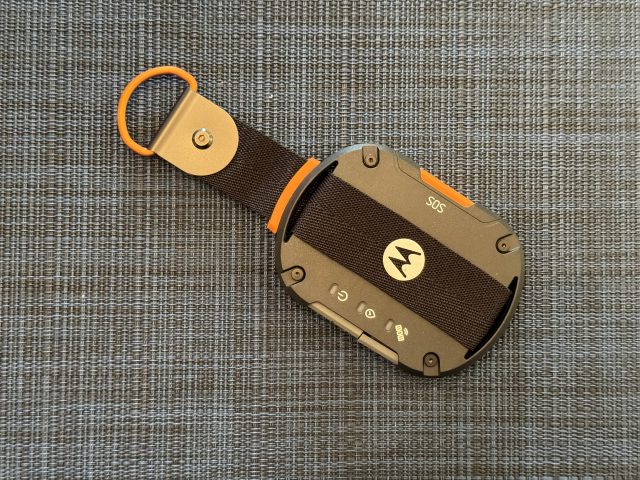
Chuong Nguyen
Motorola Defy Satellite Link
The last thing you want to be yelling into your phone when there’s an emergency on hand is, “Can you hear me now?” Motorola’s Defy is a satellite hotspot smartphone accessory designed for off-the-grid adventurers where you might be far away from mobile cellular towers. The service is expensive, so you don’t want to send needless texts and emojis, but why would you when you’re busy staring at mountaintops?
The Defy is a simple gadget that is like a mobile hotspot, but instead of connecting to cell towers and then broadcasting the wireless connectivity to nearby devices over Wi-Fi or Bluetooth, it connects to satellites. It’s about the size of a deck of cards and comes with a built-in carabiner strap to attach to bags and gears. There’s a dedicated SOS button to call for emergency assistance.
While some modern smartphones like Apple’s recent iPhone models are able to connect to satellites to send SOS messages to first responders if you need help in more remote areas, the Motorola Defy takes that a step further. With the Defy, you’ll not only be able to radio for help, but you can occasionally perform check-ins with family and friends on arduous journeys, which can provide everyone extra peace of mind. To message loved ones, you’ll need to subscribe to a satellite plan. Once you do, when you send a message to friends, they’ll receive a text message from Bullit, the company behind the Defy’s service, alerting them that they have a message from you and to download the dedicated Defy app on their iOS or Android device to view the message. This makes the service less seamless than iMessage or SMS, but it’s not too different from third-party messaging platforms like Telegram, WhatsApp, or WeChat in that both sender and recipient will need to download an extra app.
The good
- Can keep in touch with loved ones when out on remote adventures away from cell towers with two-way messaging
- Extra peace of mind knowing that help is always accessible
- Accessory itself is relatively inexpensive
The bad
- Service can be pricey if sending a lot of messages
- Requires a separate app to view, send, and receive messages
BACtrack breathalyzer
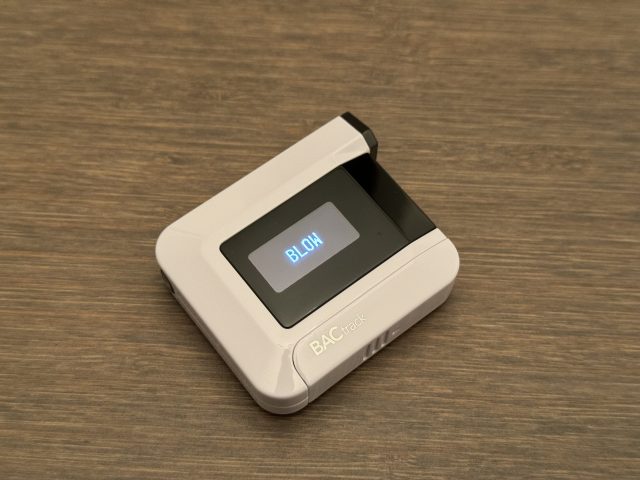
Chuong Nguyen
With the holidays just around the corner, it’s not a bad idea to have a reliable and accurate breathalyzer on hand if you intend to attend social gatherings or parties (or if you find yourself having to ride in the car with someone who has been partying already). The BACtrack breathalyzer can help you understand how long it takes your body to metabolize and burn off various alcoholic beverages. From beers and wines to spirits and hard ciders, knowing how many drinks to consume and how long to wait before you leave a party can make it safer for everyone on the road.
According to the manufacturer’s website, the BACtrack utilizes “fuel cell technology” to measure blood alcohol content. While there are different approaches to gaining a BAC reading, fuel cells are one of the more popular uses in professional settings among hospitals and law enforcement agencies. The fuel cell can measure the alcoholic content in your breath by forming a chemical reaction that oxidizes the content in your breath and produces an electrical current. The more alcohol in your breath, the more current is generated. The current is measured and converted into a reading called BAC (blood alcohol concentration).
I didn’t have a professional breathalyzer used by my local law enforcement agencies in the Bay Area to validate the readings generated by the BACtrack C8, but anecdotal evidence and historical reviews all suggest that BACtrack’s devices are fairly accurate. Understanding how blood alcohol content changes over time in your body can help you understand your health better, and you can record the readings inside the BACtrack app.
The good
- A tool to help keep the roads safe
- A good way to understand how alcohol affects your health and body
- Interesting to see how long it takes your body to metabolize different alcoholic drinks
The bad
- Accuracy hasn’t been validated, so don’t rely on this device as the ultimate arbiter of your sobriety or ability to drive
- Mouthpieces are expensive, and during the era of COVID, sharing mouthpieces is not recommended
FLIR thermal camera
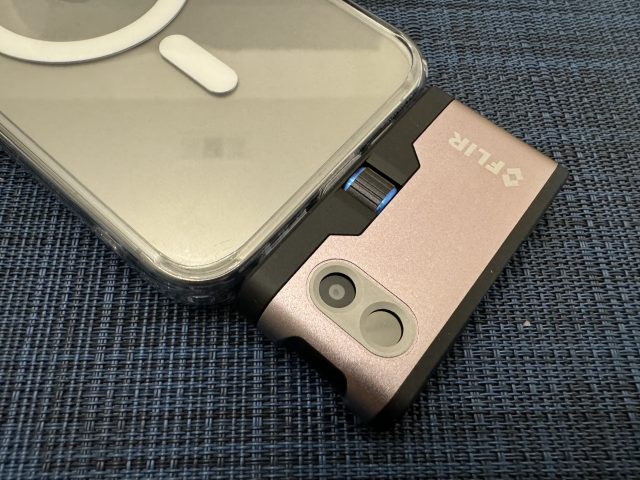
Chuong Nguyen
FLIR One Third Generation
Ever wanted the superpower of having X-ray vision? FLIR’s thermal camera is the closest thing that will give people superhero status. Spy fantasies and a romanticized view of fighting crimes aside, this thermal camera can be useful to help identify problems around the house.
Even though you might not be able to peer inside your walls, the camera can identify heat sources, which can help spot insulation problems, leaky pipes, and inefficient appliances. More sophisticated and expensive thermal cameras designed for professionals can identify potential pest problems, like rodents inside walls.
Our laptop reviewers have also used thermal cameras to detect heat problems on PCs and laptops to determine if the CPU or GPU runs on the hotter side. For laptops, it’s also useful to identify what areas on the keyboard, if any, would be more susceptible to overheating.
Practical uses aside, FLIR’s One thermal camera is also a fun toy. (We previously reviewed the initial version of the FLIR One several years ago, and the device has gotten smaller and better since then through multiple revisions.)
The good
- Can identify problem areas in the home
- With colder weather upon us, can help identify insulation issues in the house
- Professional models can help identify if there are issues with pests inside walls
The bad
- Expensive
- Useful, but less useful than you might think in the long-term, once you’ve looked at your home’s hot/cold spots and fixed them
UVCeed mobile UV-C light sanitizer

Chuong Nguyen
UVCeed Smart Mobile UVC disinfecting Light
UVCeed’s mobile UV-C light sanitizer is a solid gift for iPhone-toting germaphobes. Though pricey, this $150 low-profile MagSafe-compatible accessory is slimmer than most MagSafe battery banks on the market and claims to zap away germs with its sanitizing, mercury-free UB-C LED light. Advertised to be capable of getting rid of 99.9 percent of germs, bacteria, and viruses—including E. coli—in as little as 15 seconds, this travel-ready companion is great for the home, office, hotel rooms, and other public spaces.
Though I didn’t have the tools to check UVCeed’s 99.9 percent claims, the way UV-C lights work is by breaking the bonds in the DNA of viruses and bacteria to kill them, and the sterilizing tech has been used in hospitals. Unlike chemical sprays and wipes, like those from Lysol and Chlorox, there is no odor left behind in the process. It’s ideally suited for high-traffic areas with non-porous surfaces, like door handles and ATMs, rather than softer surfaces like hotel bedding and pillows. A smart companion app helps you identify what area is covered by the UV-C LED light so you don’t miss a spot on your mission to a germ-free reality.
The good
- Compact design and slim form factor ideal for travel
- Great for wary travelers who survived the pandemic
- Easy to use
- UV-C light leaves behind no chemical smell
The bad
- Not effective on porous or softer surfaces
- Requires recharging
- Can’t really validate whether or not it’s effective without lab analysis
Razer Kishi gamepad
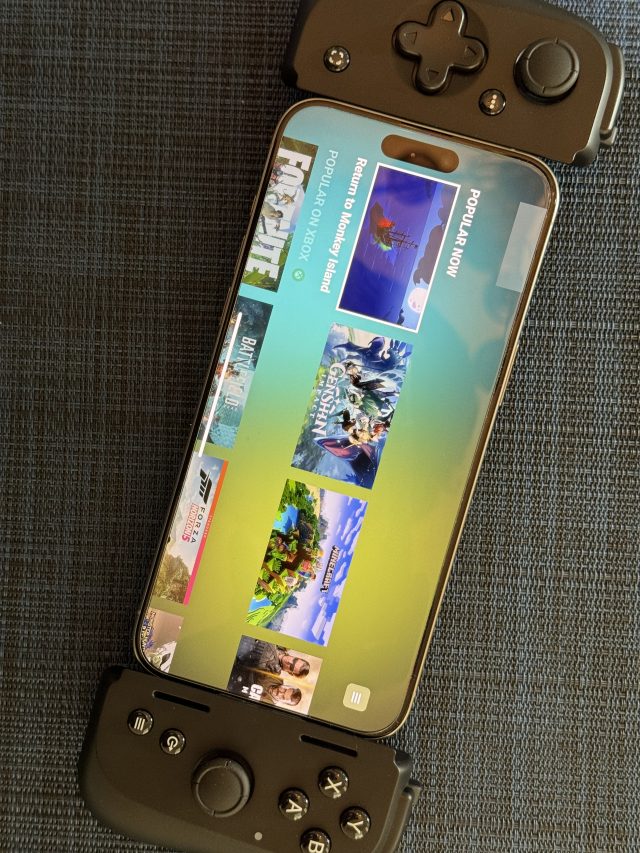
Chuong Nguyen
I love my Nintendo Switch, but the problem with having a dedicated gaming device is that I don’t always have space in my laptop bag for another accessory during my morning train commute. Instead, Razer’s telescopic Kishi V2 game controller, available either with a USB-C or Lightning plug, is one of my favorite ways to replicate the experience of my Nintendo Switch while on the go. You won’t have access to Nintendo’s ecosystem of games with the Razer Kishi V2, but you’ll get the same feel for gaming with controllers on the right and left side of your phone’s display. A telescopic mechanism in the middle expands to allow larger phones to slot in the middle.
The controller has a D-pad, two analog joysticks, triggers and shoulder buttons, a screenshot button, and a selection of gaming buttons. Grippier textures help with the ergonomics, and pass-through USB-C charging helps you prolong your game time.
Android users have more flexibility for games, as you can use the controller with various emulators to play retro games—something that’s not possible on Apple’s iOS platform. Razer also has its Nexus app, which serves as a launcher for official apps designed for Android or iOS, and the app can recommend games that are compatible with the Kishi. The Razer app also allows you to remap some of the buttons. If you’re a mobile gamer, this accessory is a terrific addition to your everyday carry (EDC) gear bag to kill some downtime without having to carry around a bulky Switch. With Apple’s support of ray tracing on the latest chipsets on the iPhone 15 series, you’ll find plenty of power in a highly portable form factor.
The good
- Highly accurate tactile controls for gaming
- Readily converts your smartphone into a Nintendo Switch-like experience
- Fun!
- Buttons are customizable
- Android users can play emulators with physical controls
The bad
- Expensive
- Not compatible with all games, and some titles require PlayStation or Xbox controllers to work
Withings Thermo
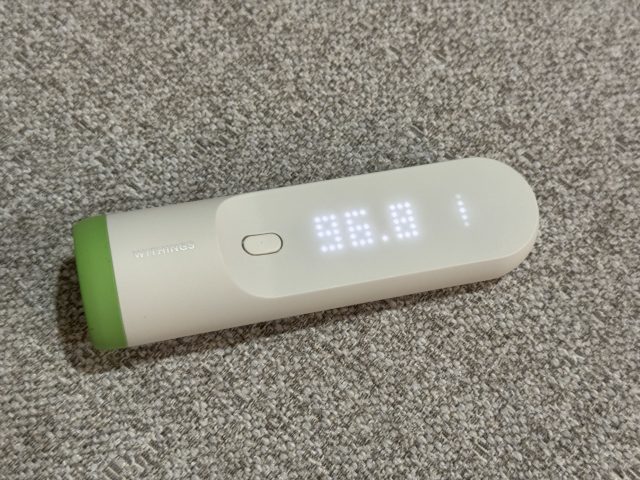
Chuong Nguyen
Withings Thermo temporal thermometer
Withings has been one of the early technology pioneers in the consumer digital health space, launching products such as smart body scales, digital blood pressure monitors, wearables, and a connected thermometer. If you have children, particularly the kind that likes to bring home germs from daycare, having a smart digital thermometer will help you diagnose if your tots are truly sick or are feigning ailments to just want to skip out on school. Of course, you’ll want to validate the digital thermometer readings with a licensed doctor or pediatrician.
Withings’ connected approach means that most of your health readings can be kept and stored in a centralized location, whether on the company’s app or a service like Apple Health for iPhone users. I like having access to my body metrics because it helps me understand my health better by making important correlations between what I am feeling and my bodily symptoms.
(If you need a temperature probe for non-human subjects, MEATR‘s digital thermometer is a great tool in the kitchen for cooks and chefs.)
The good
- Temperature can be read on simplified LED screen on-device or synchronized with app
- Pairs with Apple Health for a complete image of your health
- Records historical temperature data for trends and insight
- Touch-less to minimize the spread of germs for sick patients at home
The bad
- Expensive compared to competitors
- Large design isn’t as compact for storage
Ars Technica may earn compensation for sales from links on this post through affiliate programs.
Maqvi News #Maqvi #Maqvinews #Maqvi_news #Maqvi#News #info@maqvi.com
[ad_2]
Source link


















